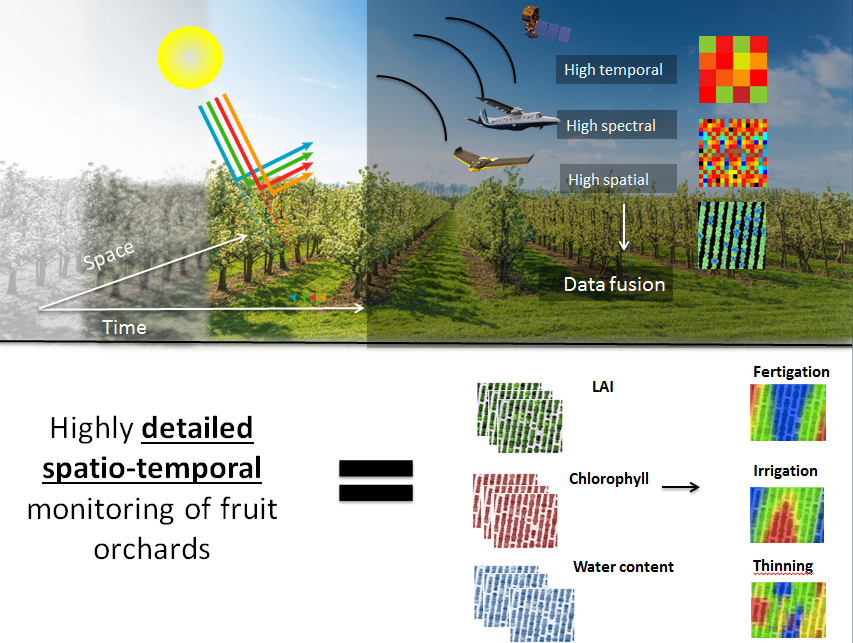Context and objectives
In Flanders, fruit-growing is an important and key economic activity. Fruit orchard productivity monitoring and a site specific management therefore become more important than ever due to the increasing demand for uniform batches of quality fruits, and the reduced use of pesticides and fertilizers for environmental sustainability. The common way to acquire tree productivity information is through visual inspections, which are subjective, demanding and time consuming. In many sectors visual inspection is already replaced by computer vision for faster, cheaper and more objective information on number, size and quality of products. Image processing therefore seems the best option to automate the visual inspections in orchards. The hypothetical ‘optimal’ plant vitality remains a theoretical concept. However, it is generally accepted that plants experiencing stress differ in some characteristics (e.g., biomass, LAI, biochemical parameter content, and photosynthetic efficiency) from plants growing under optimal conditions, and these characteristics can therefore be considered as indices of productivity.
The project aims at developing an optimized orchard tree productivity monitoring system by integrating multi-date and multi-sensor remote sensing (RS) and in-situ data. This should provide the opportunity to increase profitability and reduce the environmental effects of farming by more closely matching the application of inputs such as pesticides and fertilizers with actual conditions in specific parts of the field.
Project outcome
Results
- Development of the Hyperalign method for an improved geometric preprocessing of UAV data.
- A new data fusion techniques of multitemporal, multimodal aerial images is developed based on tensor decomposition for better understanding of the crop growth states.
- From the project results, we could preliminary conclude that for a good yield, the combination of following parameter values is needed:
o high chlorophyll content at the beginning of the season, low chlorophyll content at the end of the season
o limited biomass growth during the season (July, August) – possible link to PRI
o high water content throughout the season for higher fruit weight
These findings need to be validated to come up with well-founded conclusions. The vitality parameters in the HYPERTEMP dataset did not vary enough to make decisive conclusions. Validation of these findings is done in a follow-up project which monitors heterogeneous commercial orchards.
Products and services
- Improved image processing chain by integrating new algorithms
- Improved production estimation based on multitemporal RS
Potential users
Pcfruit, fruit growers, agriconsultants, UAV companies
| Project leader(s): | VITO - Remote Sensing - Teledetectie en aardobservatieprocessen | |||||
| Belgian partner(s) |
|
|||||
| International partner(s) |
|
|||||
| Location: |
Continent:
Country:
Region:
|
|||||
| Related presentations: | ||||||
| Website: | https://remotesensing.vito.be/case/hypertemp | |||||

